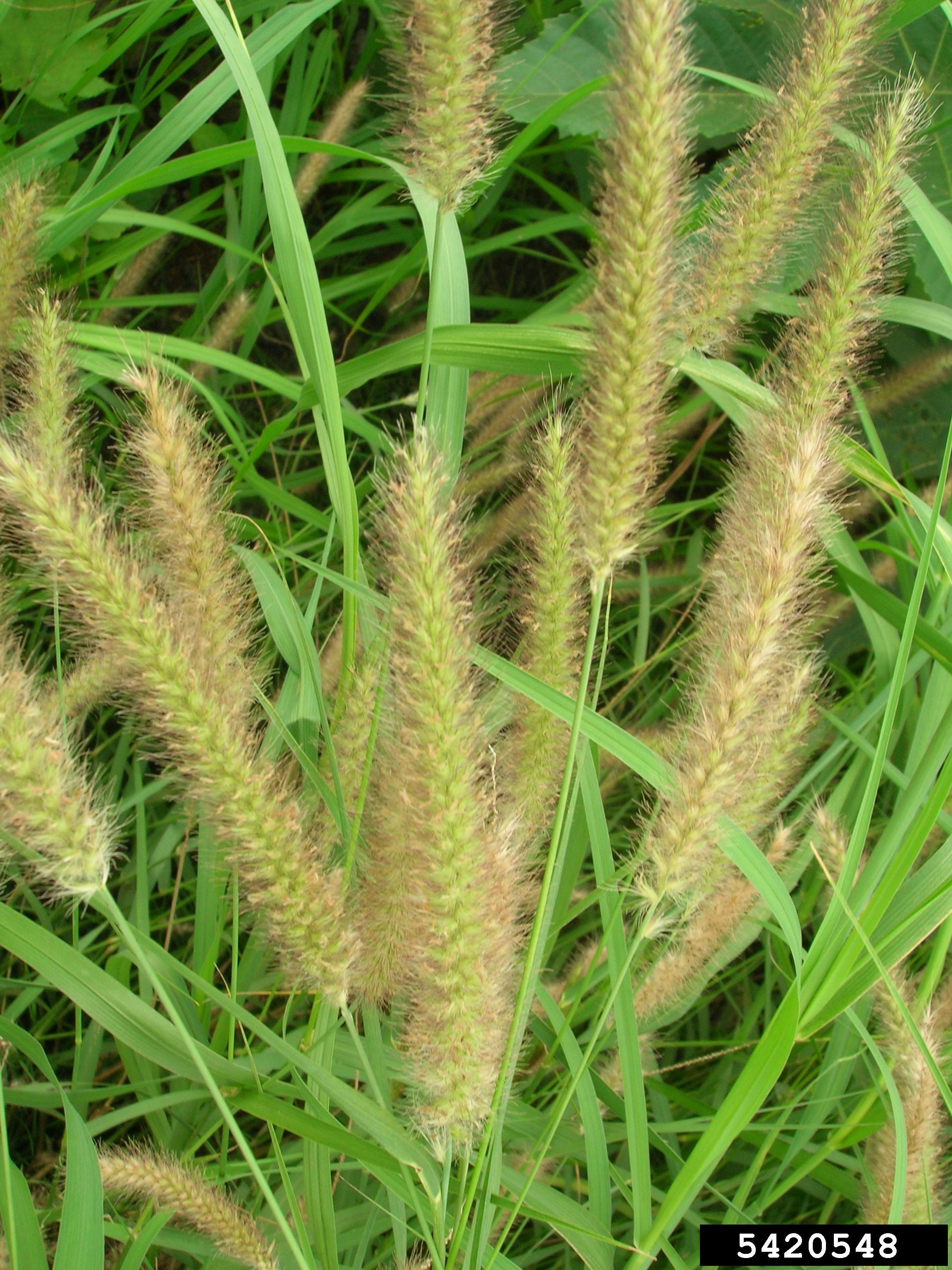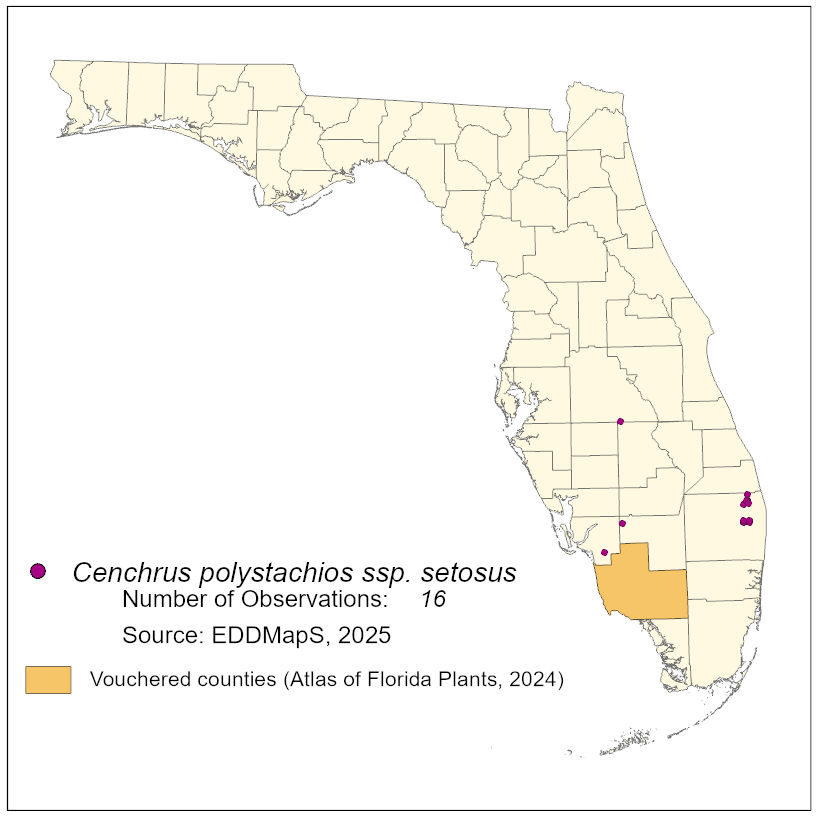Common Name: West Indian pennisetum
Family: Poaceae
Common Synonyms: Cenchrus polystachios, Cenchrus setosus, Panicum polystachion
USDA Hardiness Zone: 8b-11a
Growth Habit: Graminoid
Origin: Africa
FISC Category: 2
FDACS Listed Noxious Weed: Yes
Introduction Date: Earliest Florida voucher 1997
IFAS Assessment:

An annual or short-lived perennial grass that reaches up to 2 m high. Blades are linear and up to 55 cm in hieght. Glabrous or pubescent near the base. Sheath margines and ligules are pubescent. Flowering occurs from summer to fall. Inflorescences are upright, spike-like panicles to 35 cm long and are yellow, brown, or purple in color. Spikelets up to 5 mm long.
Disturbed sites.
Spreads primarily through seeds, although can spread vegetatively through stem segments.

No specific recommendations available, herbaceous plants can generally be treated with foliar application of glyphosate.
IFAS, Center for Aquatic and Invasive Plants. 2018. Pennisetum polystachion. http://plants.ifas.ufl.edu/plant-directory/pennisetum-polystachion/. Accessed on June 11, 2018.